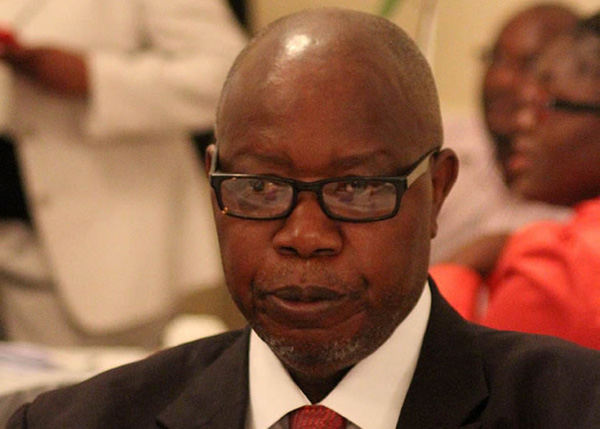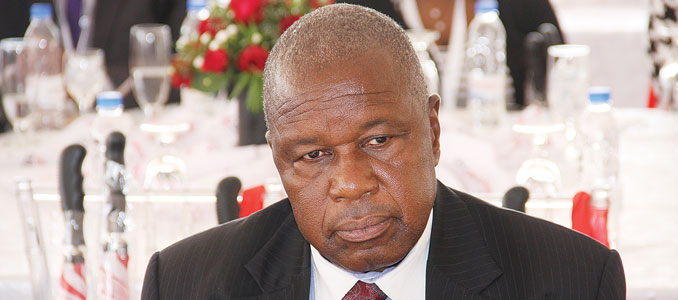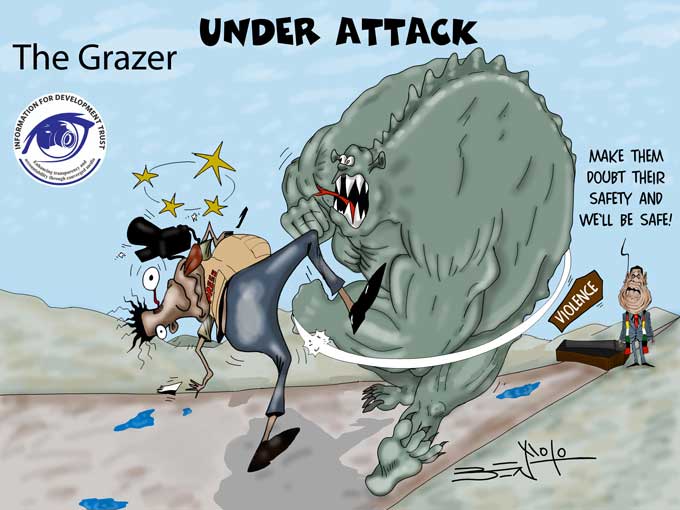
BY GEOFFREY NYAROTA
The names of Bob Woodward and Carl Bernstein, the two Washington Post reporters who gained international eminence as premier investigative journalists, following their investigation and exposure of the Watergate Scandal have remained embedded in the public mind over the past five decades.
The Watergate Scandal was a major political scandal in the United States of America involving the administration of President Richard Nixon from 1972 to 1974. It culminated in the resignation of the president.
I had the honour and privilege of interacting with both journalists when they were separately invited in 2003 to make presentations at the Nieman Foundation at Harvard University, where I was a fellow.
The enterprise and investigative acumen of Woodward and Bernstein catapulted them to international prominence.
Decades later, in faraway Zimbabwe The Chronicle, a little known daily in the city of Bulawayo, mounted Zimbabwe’s own first serious probe into large-scale corruption in the upper echelons of the post-independence administration of then president Robert Gabriel Mugabe.
We named our investigation the Willowgate Scandal in 1988 after we exposed massive corruption involving cabinet ministers and top government officials in dishonest practices at the then Willowvale Motors, a vehicle assembly plant partly owned by the state.
Our own modest inquiry and exposure claimed the scalps of five ministers and a provincial governor, who were all forced to resign in dishonour.
- Chamisa under fire over US$120K donation
- Mavhunga puts DeMbare into Chibuku quarterfinals
- Pension funds bet on Cabora Bassa oilfields
- Councils defy govt fire tender directive
Keep Reading
Strangely, the names of Woodward and Bernstein have competed for space in my memory with that of a reporter from a much later generation of American journalists, that of Jayson Thomas Blair.
He became embroiled in absolute notoriety on account of his despicable approach to the practice of the noble profession of journalism.
Blair was a young reporter who was employed by another great American newspaper, The New York Times.
He resigned from the newspaper in absolute shame three months into my fellowship at the Nieman Foundation in May 2003.
His sudden and inglorious departure followed a scandal that rocked the great American media establishment after his editors discovered that quite a number of the stories that the enterprising reporter submitted for publication were facilitated through recourse to fabrication and plagiarism.
Blair joined The New York Times in November 1999 in a position classified by the newspaper as an “intermediate reporter”.
He was subsequently promoted to the position of full reporter and later to editor. He was flying high in his career as a newshound.
But all hell literally broke loose in his moment of glory when, on April 28, 2003, Blair was summoned to the office of New York Times national editor James Roberts, who asked him to explain the circumstances surrounding certain clear similarities between an article that he had written two days previously and one crafted by another reporter Macarena Hernandez, who had presented it for publication in her own newspaper, the San Antonio Express-News on April 18.
Struck by the similarity between Blair’s offering and Hernandez’s article the senior editor of the Express-News promptly communicated with the New York Times and raised his concerns.
A thorough investigation was mounted and it was discovered that the enterprising Blair had embellished the substance of his articles on a number of instances through sheer fabrication and plagiarism.
In some cases Blair had never positioned himself anywhere near the places, including a city that he claimed in his articles to have travelled to.
Media history was made when after internal investigations, The New York Times reported on Blair’s journalistic transgressions.
The story in question was a whopping 7 239 words long.
The article which was published on the front-page on May 11, 2003, appeared under the headline: “Times Reporter Who Resigned Leaves Long Trail of Deception.”
The New York Times described the Blair incident as “a low point in the 152-year history of the newspaper”.
Sadly, both the New York Times executive editor Howell Raines and managing editor Gerald Boyd were compelled to resign from their lofty positions after losing newsroom support in the aftermath of the Blair scandal.
Senior editorial positions come with concomitant onerous responsibilities in normal circumstances.
Even more sadly, after he resigned from the newspaper, Blair was reported to have struggled with severe depression and to have entered a hospital for treatment.
There he was presented with an initial diagnosis of bipolar disorder.
A memoir written by Blair was published in 2004.
A total of 1 400 copies of Burning Down My Master’s House were sold within the first nine days. In the book, Blair revealed extended substance abuse.
He said the problem ended before he resigned from The New York Times.
Meanwhile, across the Atlantic, Associated Press reported CNN International as having announced in December 2019 that a German journalist who was found to have fabricated numerous articles was being stripped of two awards he received in 2014 from the broadcaster.
In a statement CNN International announced that the independent panel of judges, who had awarded the Journalist of the Year and Print Journalist of the Year awards to Claus Relotius four years previously had decided unanimously to withdraw them following revelations about his fraud.
Associated Press reported that German magazine Der Spiegel, where Relotius contributed initially as a freelancer and later on a full-time basis, had announced that he had fabricated interviews and facts in at least 14 articles.
Der Spiegel, one of Germany’s leading news outlets, was quoted as saying the 33-year-old journalist had committed “journalistic fraud on a grand scale over a number of years, including fabricating elements of an article about an American woman who he said volunteered to witness the executions of death row inmates”.
Associated Newspapers quoted the magazine as having said, “The fraud marks a low point in the 70-year history of Der Spiegel.”
Not surprisingly, Relotius did not respond to a request for comment on his earth-shattering misdemeanour.
Fortunately, Zimbabwe has two organisations, one voluntary and the other statutory, which are shouldered with the responsibility of ensuring that the public is effectively protected from such shocking journalistic transgressions.
The Loughty Dube-led Voluntary Media Council of Zimbabwe (VMCZ), as watchdog of ethical media practice, serves, among other things “to promote high ethical and professional standards”.
Meanwhile, the Zimbabwe Media Commission (ZMC), operating as statutory watchdog under the watchful eye of its chairperson, Ruby Magosvongwe, serves, among other responsibilities, to promote and enforce good practices and ethics in the media.
Of late, however, there are growing concerns on the media landscape that both ZMC and VMCZ have become conspicuous by their ominous silence on matters of relentless breach of ethical journalism, especially on social media, where a total lack of accountability now reigns supreme.
Otherwise Zimbabwe risks breeding a whole generation of Jayson Thomas Blairs.
- Geoffrey Nyarota is an award-winning investigative journalist and founding Editor-in-Chief of the original Daily News. He can be contacted on: gnyarota@gmail.com










